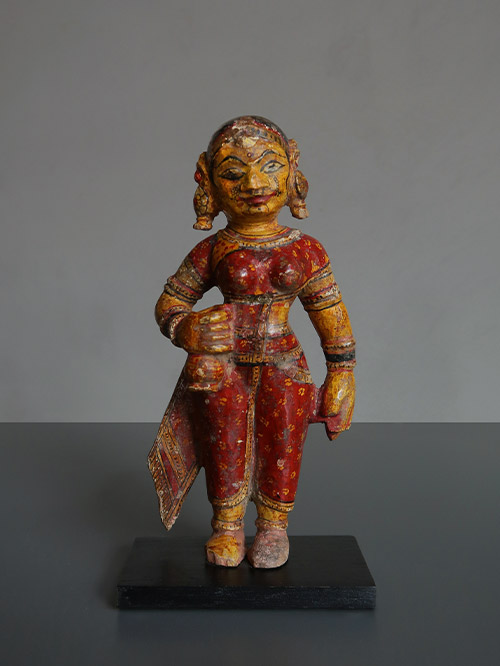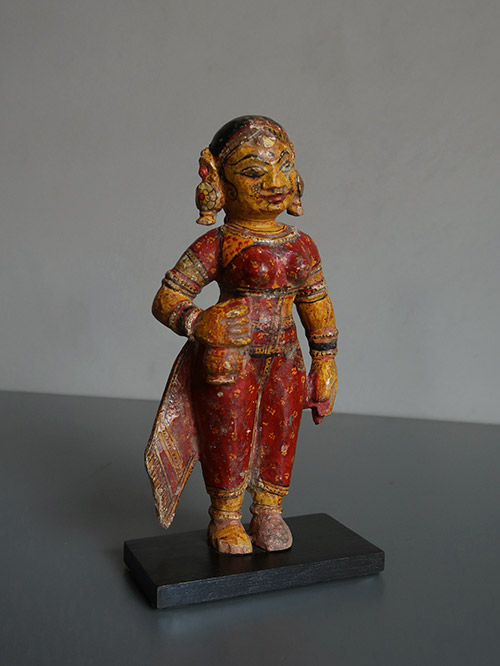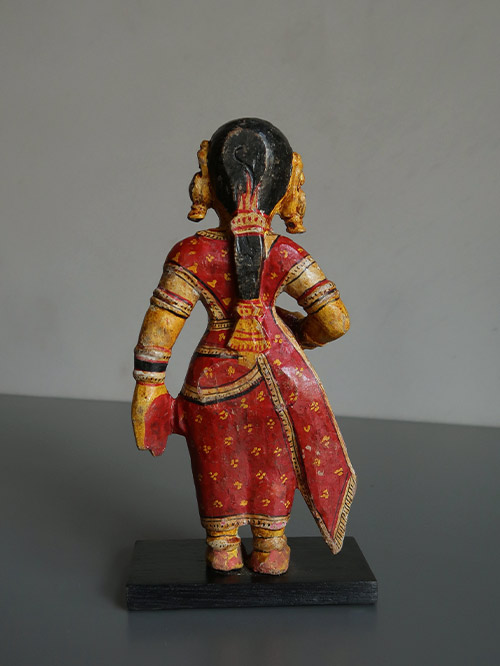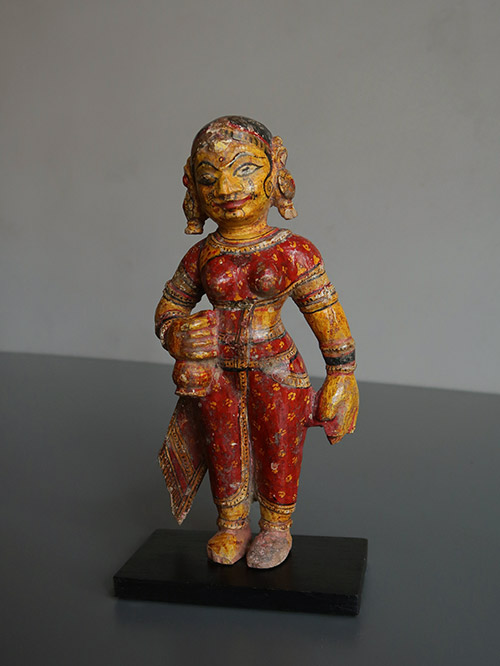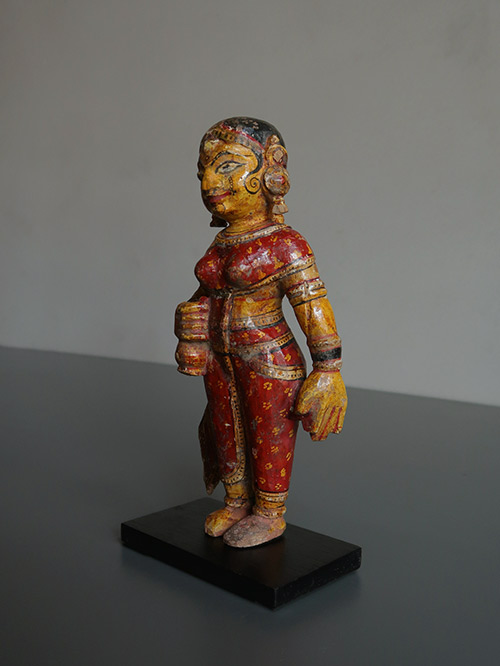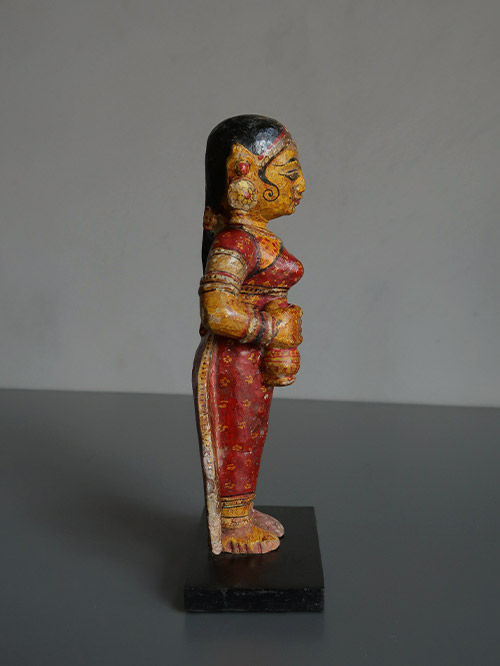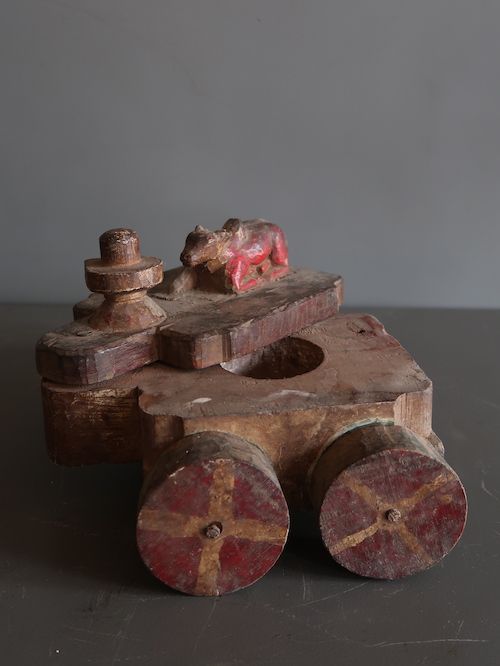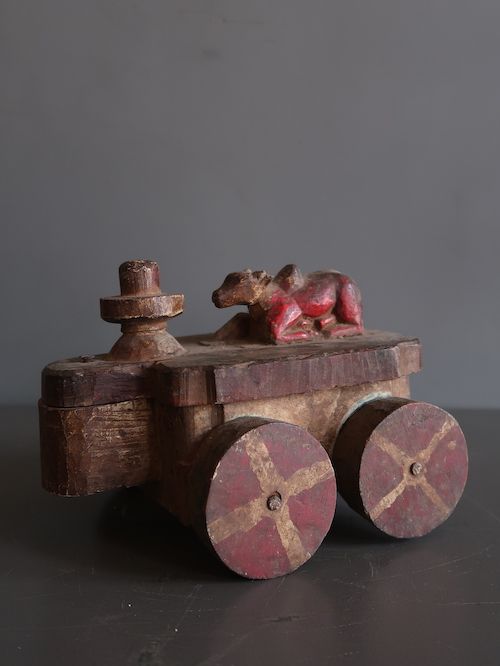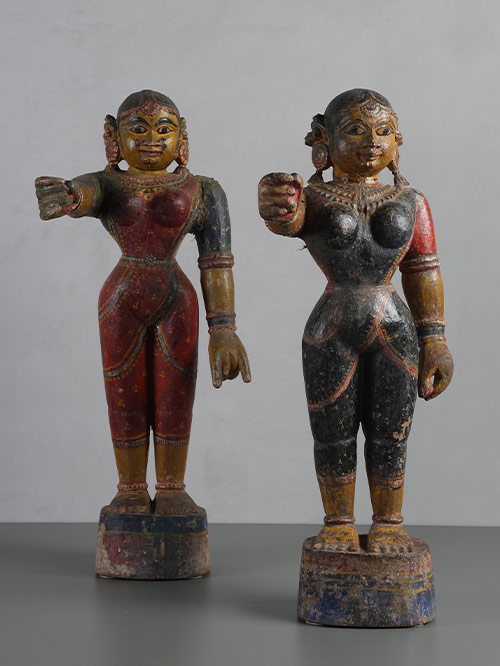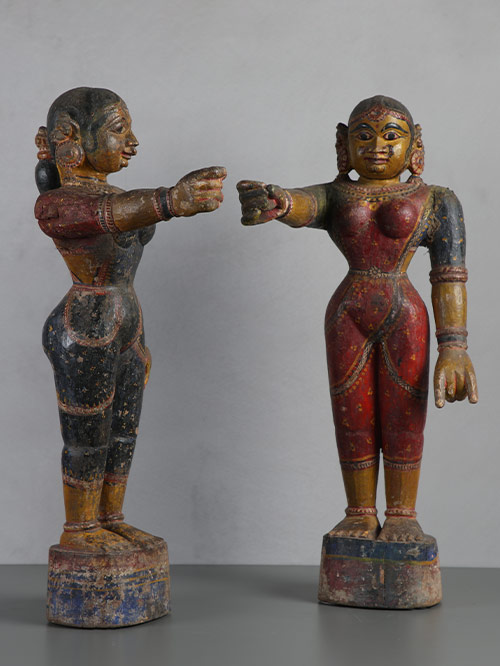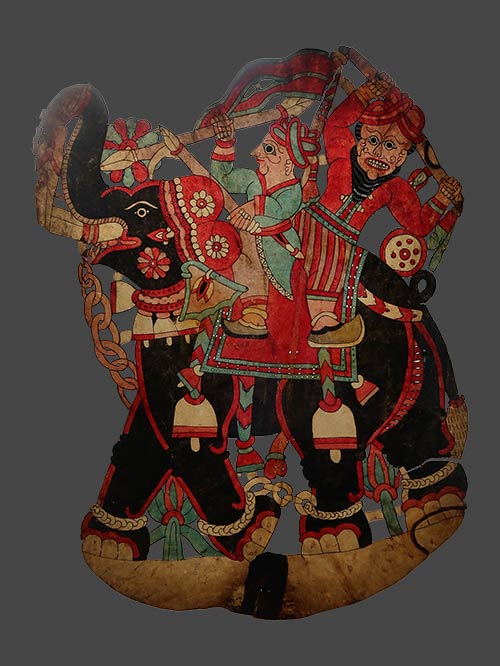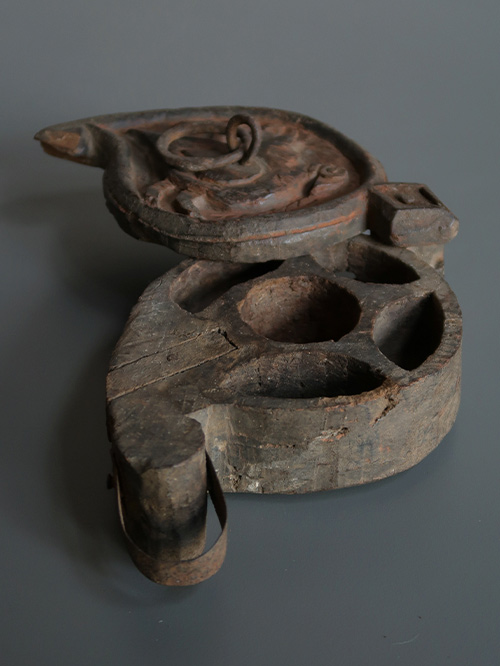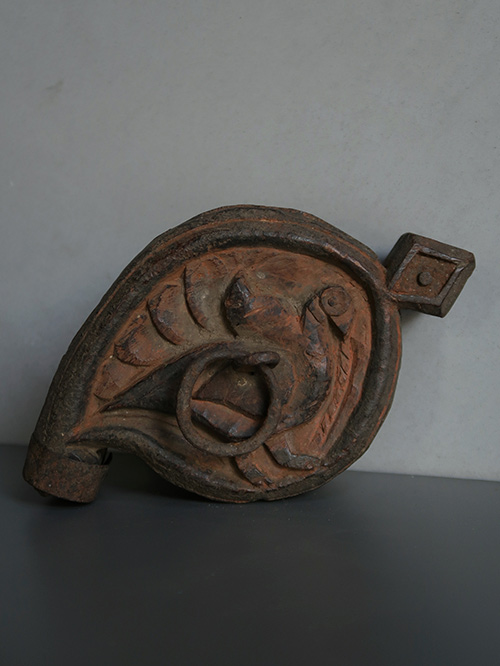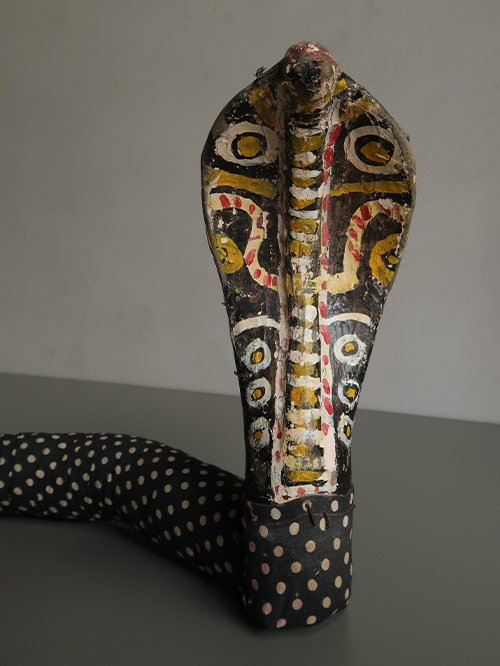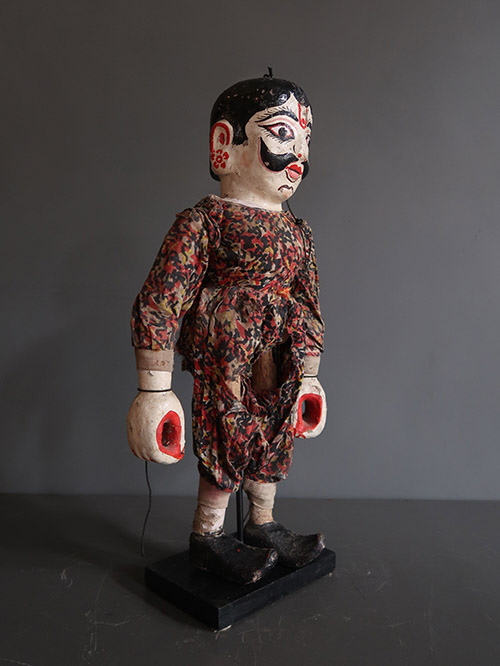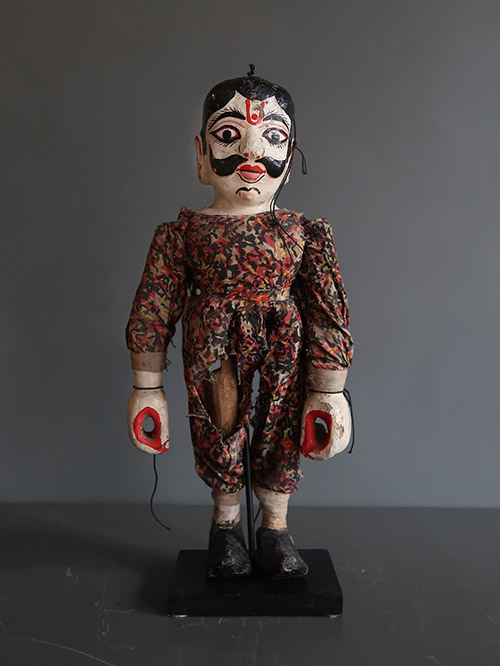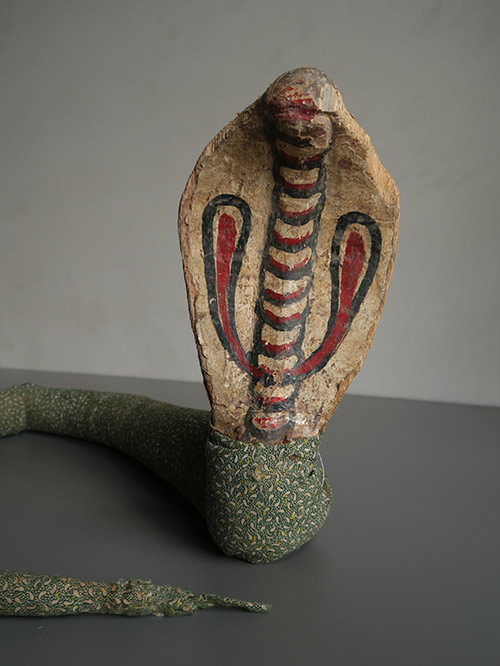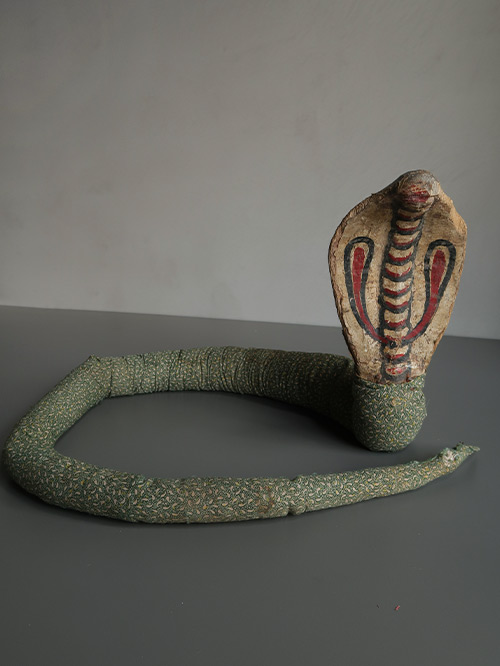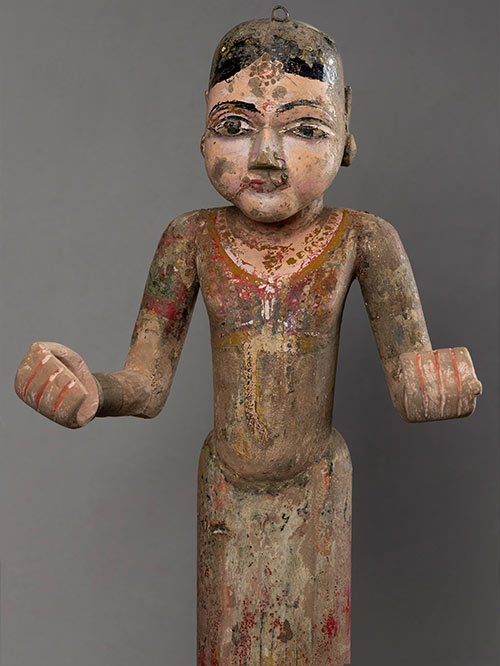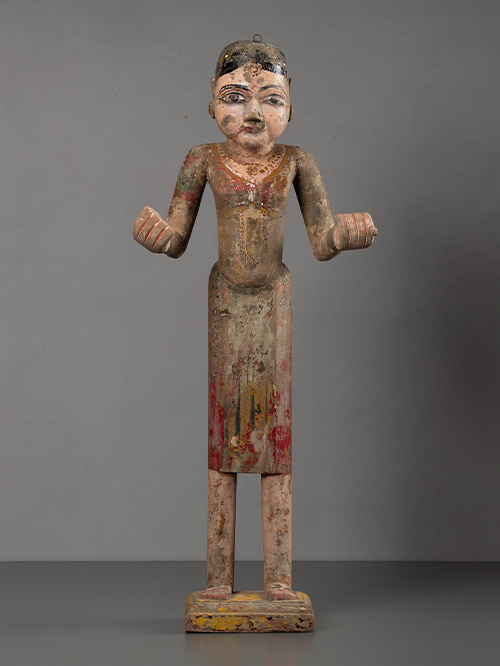Orissa
Wood, polychromed
An elegant attendant figure wearing a patterned sari. The attendant wears extensive jewellery; including multiple hand and leg ornaments.She has a full face with a cleft chin, large arched eyebrows over bulbous eyes and a gentle smile. Such life-size yet exaggerated representations were carved and sometimes painted as part of the ritual for decorating temples and palaces.
Devadasis (servants of God), were temple dancers and musicians. Their traditions were rooted in early literature, sculpture and inscriptions. From the historic period, their role in society and in religious ritual was well defined. Devadasis served for life because they were ritually married to the main deity of the temple. The institution prevailed all over India, but with greater rigour in south India, till as late as the beginning of the 20th century. From Agamic sources it is learned that they had some specific duties in the temple such as fanning the deity with a chauri, holding and waving the oil lamp during puja and dancing and singing hymns in the temple before the deity. By virtue of their being married to the deity, these women were considered nityasumangali (ever auspicious). They were believed to be able to propitiate the deity, appease his wrath and fend off evil spirits. The growth in economic resources of temples led to a corresponding increase in the rituals and festivals performed by temples. The services of the devadasis thus became popular in the religious life of this period. Special architectural arrangements were made for dance and drama performances in medieval temples. In Orissa a natamandira was added to the shrine which was often adorned with sculptures of Devadasis and musicians.
Size (cms): 26(H) x 13(W) x 7(D)
Size (inches): 10(H) x 5(W) x 3(D)

